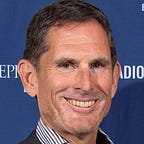Question: Would you rather fly in an airplane that was designed by an engineer or a politician? Engineers learn the discipline of collecting all the relevant information before carefully making a decision. This is great for airplane design but not for a politician.
As an engineer, I tend to fail miserably in a debate. By the time I finally develop the perfect, fully-thought-out response it is too late. I have always been obsessed with gathering all types of facts ranging from science to spirituality on a quest to determine the truth. Over the decades, I started to notice that I think quite differently compared to others. This troubled me until I discovered how the brain works.
It turns out my relentless quest to break everything down to first principles is atypical because the human brain has evolved to conserve energy. The concentrating part of the brain burns a ton of fuel (glucose). The brain would rather send all decisions to the auto-pilot of the brain. The auto-pilot uses far less fuel compared to the concentrating part of the brain, and the concentrating part of the brain is almost always inactive. Our brain design makes us susceptible to manipulation and control by others.
Without our brain’s auto-pilot, it would be hard to get through the day. Some have estimated that the human brain only holds about 1GB of information. Note: I can buy an 8GB thumb drive for $1.88 — with free shipping! With such a small “hard drive”, we humans need some tricks to get through the day and conserve brainpower.
Here are some of the brain’s “tricks”.
1) The first trick is HABIT, which allows us to do things over and over without even thinking about it. This conserves a tremendous amount of brainpower.
2) The second trick is REPETITION. Our brain simply counts the number of times it is exposed to one thing versus another and selects the biggest number. Thus, if someone tells us something over and over, we simply select the option which has the most “hits”, without thinking.
3) The third trick is SOCIAL PROOF. We tend to defer our decisions to “experts” or to the “herd”. The “herd” can be the people we hang out with, people in our church, or our workplace. We naturally assume that someone else, or a group of people, has already done the hard work of decision making, so we do not have to spend the brainpower.
4) Once we have “decided” without really thinking, we then use CONFIRMATION BIAS to ignore any contradictory information and welcome any supporting information straight into our brain. This is the reason that once someone decides something, it seems impossible to change their mind, regardless of how many facts and information you throw at them. This is related to MEDIA BIAS, where the news program we watch feeds constant one-sided information straight into our brains. (Check your favorite show at https://mediabiasfactcheck.com/ and https://en.wikipedia.org/wiki/List_of_fake_news_websites.) To make things worse, social media also is designed to reinforce confirmation bias.
In the 2016 Debates, Donald Trump was the clear winner because he is a master at taking advantage of the brain’s design. He uses these same techniques today, which can be fun to watch for. (Maybe a great drinking game?) Look for REPETITION in both words and phrases (then later observe these same words and phrases repeated by people you know). Also watch for SOCIAL PROOF, like “people say” or “this expert says”. Then, once these words and ideas have filled our brains, CONFIRMATION BIAS and HABIT takes it from there. Add in the confirmation bias of social media, and there is no turning back.
Everyone else in the 2016 Debates did not have a chance. It is not a fair fight when someone can make up any “fact” in real-time, and then use our own brains against us. Most of us are way too busy to check and analyze the facts, especially when we are designed to conserve brainpower.
Conclusion: The most successful politicians may be the ones who care the least about the truth. Fortunately, politicians do not design airplanes — but they do run countries.
APPENDIX — List of Biases:
Confirmation bias. Favoring or seeking information that affirms your pre-existing beliefs.
Coverage bias. The extent to which different issues are reported and discussed.
Concision bias. Selectively focusing on information, losing nuance. Many issues are complicated, there is no simple binary conclusion.
Authority bias. We’re more likely to trust and be influenced by ideas that come from authority figures.
Dunning-Kruger effect. The less you know, the more confident you are. Example: “don’t see why we can’t just print more money to pay the debt down?”
Availability cascade. An idea accumulates more credibility as it spreads. This is amplified by social media.
Declinism. We romanticize the past and believe that society and institutions are in decline. Example: “Make America Great Again!”
Framing effect. We draw different conclusions based on how an idea is presented to us. Example from the Right: “Government increases military spending in a renewed commitment to veterans.” Example from the Left: “Amid record levels of debt, military spending balloons yet again.
Groupthink. Conforming to a widely held world view in order to fit in and minimize conflict.
Halo effect. Our overall impression of a person influences how we feel and think about his or her character.
False consensus. Overestimating the proportion of people who agree with an idea.
